Top speed 574 km/h Length 10 m | Wingspan 11 m Introduced 2000 | |
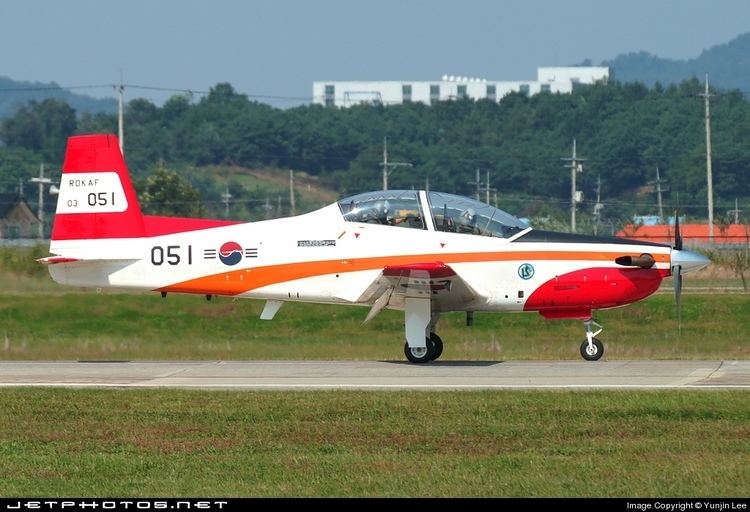 | ||
Manufacturer | ||
The KAI KT-1 Woongbi (Hangul: KT-1 웅비) is a Korean single-engined turboprop, basic training aircraft. It was jointly developed by KAI and the Agency for Defence Development (ADD). The KT-1 is the first completely indigenous Korean aircraft ever developed.
Contents
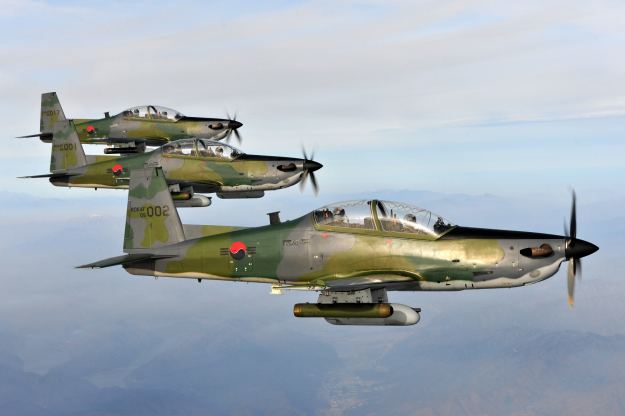
Design and development
Development was initiated under the KTX program for the Republic of Korea Air Force in 1988 using the CATIA computer program to completely develop the aircraft, the first of its class. Nine prototypes were built on June 1991 with the first flight of the KT-1 occurring on November 1991 for static and fatigue testing. In 1995, the project was officially named 'Woongbi'. In 1998 the final test flight was performed. In 1999, a contract was signed for eighty-five aircraft with provisions for an additional twenty between Korea Aerospace Industries and the Republic of Korea. The first KT-1 Woongbi was handed over to the Republic of Korea Air Force in 2000 with the delivery of the eighty-five aircraft being completed in 2002.
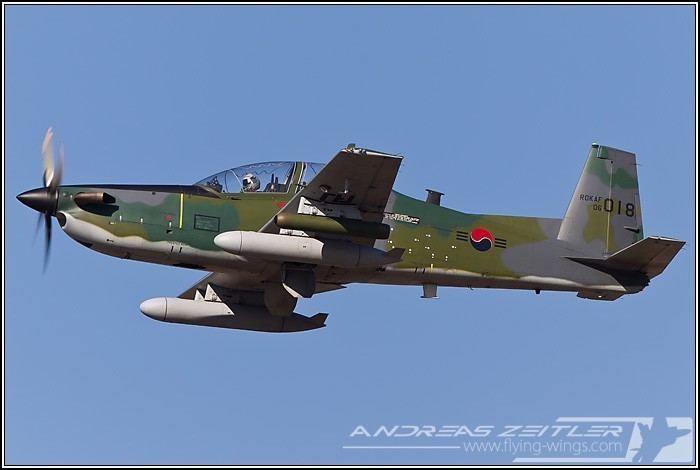
The KT-1 can be equipped with either an analog or 'glass' cockpit configuration. Both types are employed by the Republic of Korea Air Force. In terms of appearance, the KT-1 is visually reminiscent of the Pilatus PC-9.
Operational history
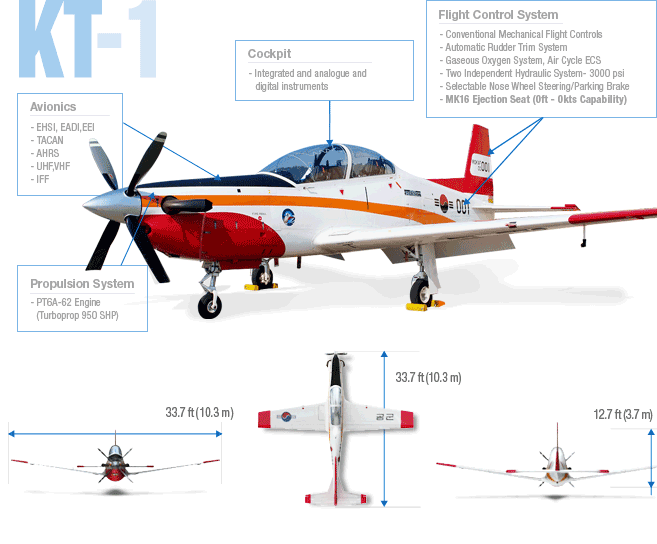
KAI exported seven aircraft plus spare parts to Indonesia in April 2003 under a 60 million USD contract, and five more in May 2005. In a press release held in Sacheon, South Korea on March 8, 2006, KAI stated that it will export more than 150 improved versions of the KT-1 to various countries in Central America and Southeast Asia. The improved export version of the KT-1 will be called KT-1C.
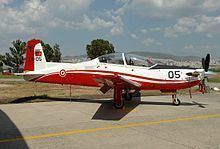
As of June, 2007, South Korea and Turkey have successfully negotiated for a contract for exporting 40 (+15) KT-1, as well as modular armor technology of K2 Black Panther for Turkey's future indigenous MBT, to Turkey for KRW₩500,000,000,000 (approximately US$540,000,000).
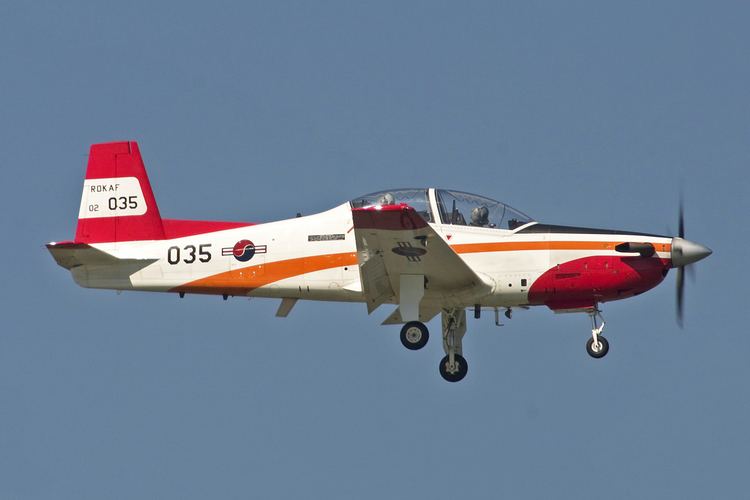
On 6 November 2012, KAI and the Peruvian Air Force signed a contract for 20 KT-1Ps (ten KT and ten KA versions) including some offset and technology transfers for an approximate amount of US$208 million. KAI was to provide the first four aircraft by 2014 and the rest were to be assembled at SEMAN (maintenance air wing of the Peruvian Air Force).
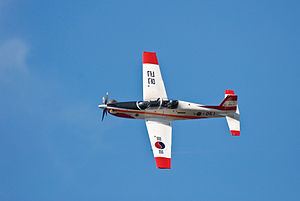
On 15 March 2015, Indonesia's Jupiter Aerobatic Team, which flies the KAI KT-1, experienced a serious midair collision during a practice session for Malaysia's Langkawi International Maritime and Aerospace Exhibition. Initial reports stated that all four pilots survived the collision.
Variants
Operators
Specifications (KT-1)
Data from Jane's All The World's Aircraft 2003–2004
General characteristics
Performance
